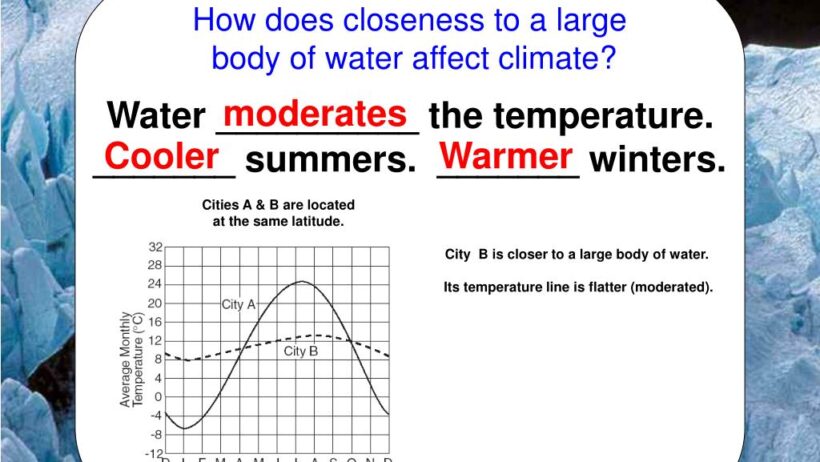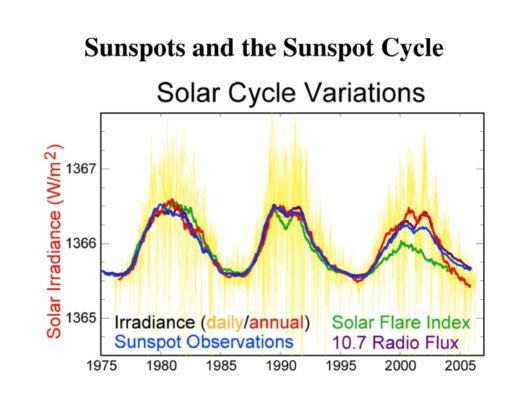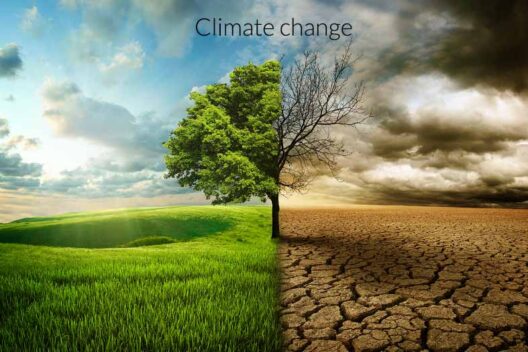The vast expanse of Earth’s oceans is often likened to a colossal thermostat, diligently regulating the planet’s climate through intricate mechanisms of heat absorption and distribution. These immense bodies of water act as a stabilizing force, exerting profound influence not only on meteorological patterns but also on the biosphere, shaping ecosystems and influencing human activity. To comprehend the role of oceans as the planet’s climate influencers, it is essential to delve into their physical properties, their interactions with the atmosphere, and their contributions to global climate systems.
Firstly, the sheer volume of the oceans—covering more than 70% of the Earth’s surface—renders them a formidable player in climate regulation. Water possesses a high specific heat capacity, meaning it can absorb and store significant amounts of heat without undergoing drastic temperature changes. This property allows the oceans to act as a buffer against temperature fluctuations. During the day, the oceans absorb solar radiation, but at night they release this stored heat, thus maintaining a more stable temperature across the planet. This phenomenon is particularly pivotal in temperate regions where land masses can experience rapid temperature shifts.
Moreover, the stratification of ocean waters creates varied thermal layers which further moderates climate. The warm surface layer, heated by the sun, does not simply exist in isolation. It interacts with the colder, deeper layers through thermohaline circulation. This complex interplay sustains a global conveyer belt of ocean currents, transporting warm water from the equator toward the poles and cold water from the poles back to the equator. As these currents traverse vast distances, they redistribute heat, significantly influencing regional climates. For instance, the Gulf Stream delivers warm Caribbean waters to the North Atlantic, resulting in milder winters for countries like the United Kingdom, which would otherwise experience harsher conditions at such northerly latitudes.
The vitality of this thermoregulation extends beyond mere temperature modulation; it also affects precipitation patterns. As warm air rises from the ocean surface, it cools and condenses, forming clouds that precipitate rain over coastal regions and beyond. Thus, ocean currents shape the hydrological cycle, dictating the distribution of freshwater resources essential for agriculture and ecosystems. Disruptions in these currents can lead to dire consequences; a shift in patterns can spawn droughts in one region while inundating another. Events such as El Niño and La Niña underscore the volatility of these relationships, revealing just how susceptible weather systems are to the rhythms and flows of the ocean.
Furthermore, oceans influence climate through the greenhouse gases they store and produce. Phytoplankton, microscopic marine organisms, play a pivotal role in carbon sequestration. These organisms, through photosynthesis, absorb carbon dioxide from the atmosphere, mitigating the greenhouse effect. Additionally, oceans are a significant carbon sink; they absorb about a quarter of the CO2 emitted by human activities. This process, while beneficial in the short term, also leads to ocean acidification, which threatens marine biodiversity and can disrupt the very systems that stabilize climate, creating intricate feedback loops that complicate climate projections.
The interplay between the oceans and the atmosphere extends further into the realms of weather phenomena and climate extremes. The oceans release latent heat, which fuels storm systems and strengthens cyclonic activities. Phenomena such as hurricanes derive their energy from warm ocean waters; as sea surface temperatures rise—a consequence of climate change—the intensity and frequency of such storms are likely to escalate. These storms not only wreak havoc in coastal regions but also serve as stark reminders of the delicate equilibrium within which our climate operates. As warmer seas generate more powerful storms, coastal communities face existential threats, necessitating adaptive strategies to build resilience against climatic unpredictability.
In exploring the interaction between large bodies of water and climate, one must also acknowledge their role as indicators of climate change. Ocean temperatures, sea level rise, and salinity shifts serve as vital signs for a warming planet. Rising sea levels, a direct result of thermal expansion and melting polar ice, threaten natural habitats and human settlements alike. Coastal ecosystems and economies hinge on the health of marine environments, reflecting the urgent need for responsible stewardship and sustainable practices. Protecting and restoring ocean health is not merely an environmental imperative; it is tantamount to safeguarding human futures in the face of climate variability.
In conclusion, the oceans serve as Earth’s thermostat, intricately intertwined with the climate systems that dictate so much of life on our planet. Their ability to absorb, regulate, and distribute heat, coupled with their role in weather patterns and carbon cycling, elevates them to a critical status in climate science. As we navigate the complexities of a changing climate, understanding and respecting the oceans becomes imperative, for they are not merely vast seas of water—they are the lifeblood of our climate, nurturing and sustaining both land and life. Protecting these invaluable resources ensures that the delicate balance of Earth’s climate can continue to thrive, creating a harmonious symbiosis between humanity and the natural world.

www.slideserve.com
climate affect water large factors bodies moderate land do than temperatures heat absorb release ppt powerpoint presentation cooler warmer








